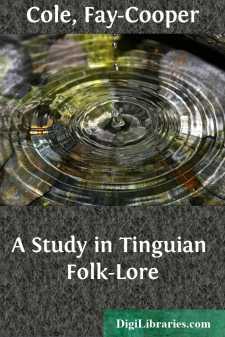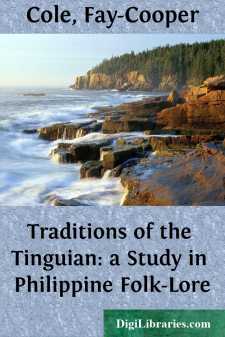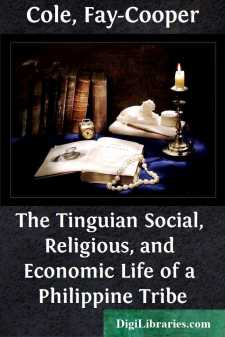Categories
- Antiques & Collectibles 13
- Architecture 36
- Art 48
- Bibles 22
- Biography & Autobiography 813
- Body, Mind & Spirit 142
- Business & Economics 28
- Children's Books 17
- Children's Fiction 14
- Computers 4
- Cooking 94
- Crafts & Hobbies 4
- Drama 346
- Education 46
- Family & Relationships 57
- Fiction 11829
- Games 19
- Gardening 17
- Health & Fitness 34
- History 1377
- House & Home 1
- Humor 147
- Juvenile Fiction 1873
- Juvenile Nonfiction 202
- Language Arts & Disciplines 88
- Law 16
- Literary Collections 686
- Literary Criticism 179
- Mathematics 13
- Medical 41
- Music 40
- Nature 179
- Non-Classifiable 1768
- Performing Arts 7
- Periodicals 1453
- Philosophy 64
- Photography 2
- Poetry 896
- Political Science 203
- Psychology 42
- Reference 154
- Religion 513
- Science 126
- Self-Help 84
- Social Science 81
- Sports & Recreation 34
- Study Aids 3
- Technology & Engineering 59
- Transportation 23
- Travel 463
- True Crime 29
Fay-Cooper Cole
Fay-Cooper Cole was an American anthropologist known for his contributions to the study of Southeast Asian cultures and indigenous peoples of the Philippines. He was a professor at the University of Chicago and a key figure in the development of anthropology in the United States. Cole authored several works, including "The Tinguian: Social, Religious, and Economic Life of a Philippine Tribe," which provided detailed ethnographic studies of indigenous groups. His research helped shape early 20th-century understandings of cultural anthropology and human societies.
Author's Books:
Sort by:
by:
Fay-Cooper Cole
A STUDY IN TINGUIAN FOLK-LORE This paper is based on a collection of Philippine folk-tales recently published by the Field Museum of Natural History. [1] The material appearing in that publication was gathered by the writer during a stay of sixteen months with the Tinguian, a powerful pagan tribe inhabiting the mountain districts of Abra, Ilocos Sur, and Norte, of Northern Luzon. In social...
more...
by:
Fay-Cooper Cole
Introduction For the purposes of our study, the tales have been roughly divided into three parts. The first, which deals with the mythical period, contains thirty-one tales of similar type in which the characters are for the most part the same, although the last five tales do not properly fit into the cycle, and the concluding story of Indayo is evidently a recent account told in the form of the older...
more...
by:
Fay-Cooper Cole
HABITAT. The west coast of Davao Gulf between Daliao and Digos is dotted with small villages, the inhabitants of which are largely Bagobo who have been converted to the Christian faith and have been induced to give up their mountain homes and settle in towns. Back of this coast line rise densely timbered mountain peaks, lateral spurs from which often terminate in abrupt cliffs overlooking the sea. From...
more...
by:
Fay-Cooper Cole
Introduction It seems desirable, at the outset, to set forth certain general conclusions regarding the Tinguian and their neighbors. Probably no pagan tribe of the Philippines has received more frequent notice in literature, or has been the subject of more theories regarding its origin, despite the fact that information concerning it has been exceedingly scanty, and careful observations on the language...
more...





